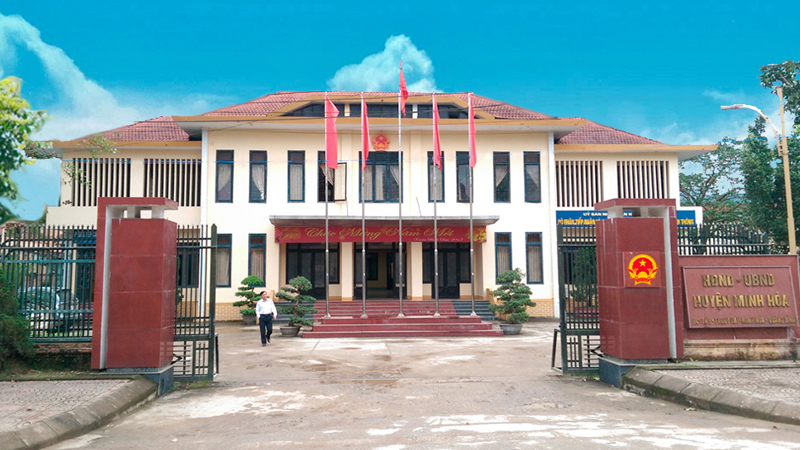Watching TV shows that reunite long-lost family members can be incredibly heartwarming and emotional. However, in reality, there are legal procedures to officially recognize and reunite with your loved ones. Let’s explore the latest legal procedures for parental and filial recognition.
1. Latest Procedures for Parental and Filial Recognition
According to current legal regulations, the following documents are required for the recognition of parents or children:
Documents for presentation:
- A valid passport, identity card, or citizen ID card, or other documents with personal information and a photo issued by a competent authority, to prove the identity of the person requesting parental or filial recognition.
- Proof of residence to determine the competent authority for parental or filial recognition (during the transition period).
Documents to be submitted:
- A completed registration form for parental or filial recognition according to the provided template.
- Evidence to prove the parent-child relationship, including:
- Official documents from medical or other competent authorities confirming the parent-child relationship.
If official documents are not available, a written statement from the parties involved, acknowledging the parent-child relationship, along with at least two witnesses, is required.
 “Like There Was Never A Separation” is a famous TV program that reunites long-lost family members
“Like There Was Never A Separation” is a famous TV program that reunites long-lost family members
2. Latest Procedures for Parental and Filial Recognition
 Latest Procedures for Parental and Filial Recognition
Latest Procedures for Parental and Filial Recognition
Step 1: Prepare the necessary documents as outlined in Section 1 and submit them to the competent authority for resolution.
Step 2: Submit the completed documents to the People’s Committee at the communal level, which has the authority to handle such matters.
In cases without foreign elements:
– Submit the documents to the People’s Committee in the residential area of the person being recognized or the person recognizing the parent-child relationship.
The processing time should not exceed 3-5 working days from the date of receiving complete documents, and in cases requiring verification.
In cases with foreign elements:
– Submit the documents to the People’s Committee at the district level in the residential area of the person being recognized as a parent or child.
– All parties involved in the parent-child recognition must be present during the registration process.
Step 3: The official receiving the documents is responsible for checking the validity and completeness of the submitted documents and comparing the information in the registration form with the supporting documents. If the documents are complete and valid, the official will issue a receipt stating the date and time of the result; if the documents are incomplete or require improvement, the official will guide the applicant on how to supplement or improve the documents according to the regulations. If immediate supplementation or improvement is not possible, a written guide will be provided, detailing the required documents or improvements, along with the signature and full name of the receiving official.
– After receiving the complete set of documents, if the parent-child recognition is deemed valid and uncontested, the civil status official will report to the Chairman of the Commune-level People’s Committee. If the Chairman approves the request, the civil status official will record the recognition in the Register of Parental and Filial Recognition, and guide the applicant to verify the information in the Extract of Parental and Filial Recognition and the Register. The Chairman of the Commune-level People’s Committee will then sign and issue the Extract of Parental and Filial Recognition to the applicant.
3. Where to Register for Parental and Filial Recognition?
The person or persons requesting parental or filial recognition must submit the application directly to the competent People’s Committee at the communal level.
 Register for parental and filial recognition at the competent People’s Committee at the communal level
Register for parental and filial recognition at the competent People’s Committee at the communal level
4. Documents Proving Parental and Filial Relationship
As mentioned earlier, to prove the parent-child relationship, you will need:
- Official documents from medical, forensic, or other competent authorities confirming the parent-child relationship.
- In the absence of such official documents, a written statement from the parties acknowledging the parent-child relationship and at least two witnesses to support the claim are required.
 DNA testing is often an accurate method to determine biological relationships
DNA testing is often an accurate method to determine biological relationships
5. Special Cases of Parental and Filial Recognition
Unmarried couples living together
When a man and a woman live together as husband and wife without a marriage certificate and have a child together, the recognition of the child by the father (or mother) does not require the consent or involvement of the other parent, provided that they cannot be contacted. If the application includes a birth certificate and the personal papers of the other parent, their information must be filled in according to those documents. Otherwise, the applicant provides the information and is solely responsible for its accuracy before the law.
Child born and registered before marriage
If a child is born and registered before the parents’ marriage, and the father’s (or mother’s) information is missing from the birth certificate, a written acknowledgment of the child by both parents after marriage eliminates the need for parental recognition procedures.
In this case, a supplementary procedure is carried out to add the missing parent’s information to the Household Register and the child’s birth certificate.
 A written acknowledgment of the child by both parents after marriage makes parental recognition procedures unnecessary
A written acknowledgment of the child by both parents after marriage makes parental recognition procedures unnecessary
Child born before marriage but registered after marriage
If an unmarried couple has a child before marriage but does not register the birth until after their marriage, and both parents acknowledge the child in writing, the father’s (or mother’s) information will be included in the child’s birth certificate without the need for parental recognition or supplementary procedures.
6. Frequently Asked Questions about Parental and Filial Recognition Procedures
What is the time limit for resolving parental and filial recognition according to legal regulations?
Typically, the process should take no more than 3 working days. However, in cases requiring verification, the time limit is extended to 8 working days (excluding Saturdays, Sundays, and holidays).
What are the costs involved in parental and filial recognition procedures?
The fee amount is determined by the Provincial People’s Council. Additionally, individuals from families with revolutionary achievements, low-income households, or those with disabilities are exempt from paying the fee.
Further reference: : Where to do it and what documents are required?
This article has provided essential information about the legal procedures for parental and filial recognition. We hope it has equipped you with the knowledge you need. Wishing you all the best.











